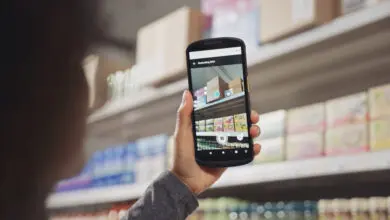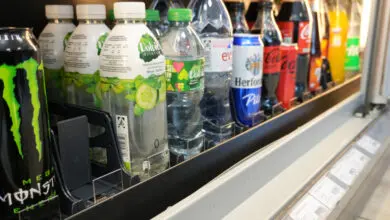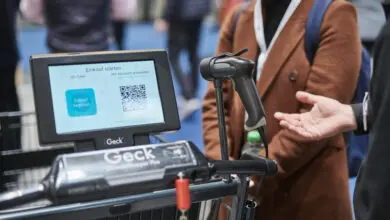Guest Feature: Loss prevention improves customer experience at self-checkout

When using self-checkout systems, the interests of retailers are not always the same as those of their customers. Retailers need to reduce the risk of shrink, while customers want to pay as quickly as possible. And one usually comes at the expense of the other.
In response to this phenomenon, Toshiba Global Commerce Solutions developed self-checkout systems that aim to balance the needs of both retailers and customers. These developments will allow retailers to minimise their inventory losses, which according to a study by the EHI Retail Institute, amounted to a total of 4.8 billion euros in 2023. At the same time, customers will benefit from faster shopping.
Customers first encountered self-checkout systems in Germany in grocery stores and hypermarkets over 20 years ago, at a time when the technology was still in its infancy. To prevent theft, a weight check was used. If the weight of the item placed in the packing station did not match with the scanned item, the checkout process would be halted, or a store associate would be alerted.
Customers learned to scan, pack, and pay for their items correctly. Eating chocolate or consuming other items before paying was technically ‘theft’ at self-checkout counters, which customers quickly came to understand. Despite this, in the early years, weight check scales often triggered false alarms.
Traditional loss prevention frustrated shoppers at self-sheckouts
Historically, loss prevention through weight control came at a price – the more effective it was, the more it slowed down checkout time. Each false alarm required an employee to investigate and resolve the error, which frustrated everyone involved.
Another pain point for customers was random checks conducted by employees. While the selection process was random, many customers felt uneasy when their purchases were checked against their receipt. As a result, many preferred to use traditional cashier-operated counters.
Staffing for self-sheckout systems
To better prevent theft, retailers needed staff to monitor self-checkouts. Typically, one employee would oversee four to six self-checkout systems. While they could often resolve issues remotely, they frequently had to address problems in person.
Employees also assisted customers when needed, particularly with tasks like locating and selecting fruit or vegetables from the on-screen menu.
The video shows how retailers can analyse customer behaviour to improve checkout experiences, provide actionable insights to mitigate risks, and improve customer throughput, all while reducing shrink.
Using cameras to control shrink at self-checkouts
When retailers began installing surveillance cameras at self-checkout systems, the cameras initially deterred some thieves. However, their large and conspicuous design made honest customers feel uncomfortable. Additionally, staff were required to monitor the footage to identify theft attempts.
A shift occurred when smarter technology became available. Modern cameras equipped with artificial intelligence and machine learning algorithms are now able to recognise suspicious behavior patterns in real-time. They can prompt the shopper to correct their mistakes, or alert store personnel to a potential theft, enabling an intervention to occur before a loss.
Artificial intelligence and edge computing
With the help of computer vision and artificial intelligence, loss prevention solutions have become increasingly sophisticated. These systems are able to detect when items are packed without being scanned and prompt customers to correct the error. Toshiba’s loss prevention solution avoids interrupting the checkout process, instead displaying a notification on the monitor to guide the customer to scan the item correctly. This approach ensures a more positive checkout experience for the customer, while associates spend less time resolving errors, reducing the workload and increasing customer throughput.
Toshiba’s loss prevention solution also helps retailers by analysing fraud patterns and visualising insights, enabling them to take proactive measures. For example, if a specific product category is frequently targeted, retailers can implement additional security measures to address the issue.
Cameras enable quicker checkout
Intelligent cameras do more than prevent fraud – they also recognise products, making self-checkout systems easier and faster to use. Produce recognition technology increases customer satisfaction by reducing the time required for item recognition.
Toshiba’s self-checkout solution boasts over 95 per cent accuracy in product recognition, saving customers an average of more than four seconds per item. For example, when a customer places red apples under the camera, the system identifies them correctly – even if they are in a transparent bag – and suggests only the relevant varieties available.

Self-checkout in every retail segment
After their success in grocery retail, self-checkout systems have been adopted in various specialty and fashion stores. Different retail formats have specific requirements, and Toshiba’s TCx Smart Series offers flexible configurations to meet these needs. Even if store requirements change, the systems can be easily adapted, enabling retailers across segments to provide customers fast and convenient self-checkout options while protecting their inventory from theft.
Book your appointment and get a free day ticket for EuroCIS 2025
Explore at EuroCIS in hall 9 at booth B42, how Toshiba redefines self-checkout and how AI-powered loss prevention boosts the customer experience.




